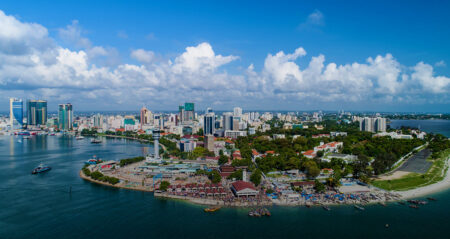Stats SA has reported that South Africa’s manufacturing output rose by 2.9 per cent year on year in September after rising by a revised 1.7 per cent in August.
Factory production rose 4.9 per cent month on month in September. Although, analysts had predicted a 2.35 per cent fall in annual terms in September and for output to be flat month on month.
Statistics South Africa (Stats SA) formerly known as the “Central Statistical Service”, is the national statistical service of South Africa with the aim of producing timely, accurate and official statistics, in order to advance economic growth, development and democracy.
- Manufacturing production in South Africa increased by 2.9 per cent in September 2022 compared with September 2021.
- Data showed motor vehicle parts and accessories division were the largest contributors to the September numbers contributing 3.7 per cent points to manufacturing.
- The food and beverages division increased by 8.1 per cent contributing 1.9 per cent points to the manufacturing numbers.
- The largest negative contribution was made by the petroleum, chemical products, rubber and plastic products division which fell by 9.8 per cent.
Statistics South Africa produces official demographic, economic and social censuses and surveys.
Read: Transforming manufacturing in Africa
Stats SA conducts a monthly survey of the manufacturing industry, covering manufacturing enterprises. They use a sample drawn from the business sampling frame (BSF), with enhanced coverage of South African businesses.
Stats SA continuously update its sampling frame, based on units registered for value added tax (VAT) and income tax (IT) obtained from the South African Revenue Service (SARS).
The annual increase in manufacturing output in September was broad-based, with five out of 10 manufacturing divisions recording growth. Among the five major manufacturing divisions, growth was underpinned by motor vehicles, parts and accessories and other transport equipment division which increased by 43.2 per cent year-on-year and contributing 3.7 percentage points. Food and beverages division’s production jumped by 8.1 per cent year-on-year and contributing 1.9 percentage points.
Read: Visa free travel: Kenya, South Africa pact boosts AfCFTA

Seasonally adjusted manufacturing production increased by 4.9 per cent in September 2022 compared with August 2022. This followed month-on-month changes of 2.2 per cent in August 2022 and 0.1 per cent in July 2022.
Read: South Africa expects higher tax revenues buoyed by technology
Seasonal adjustment is a means of removing the estimated effects of normal seasonal variation from the series so that the effects of other influences on the series can be recognised more clearly. Seasonal adjustment does not aim to remove irregular or non-seasonal influences which may be present in any particular month. According to Stats SA, seasonally adjusted estimates are generated each month using the X-12-ARIMA Seasonal Adjustment Program developed by the United States Census Bureau.
Seasonally adjusted manufacturing production increased by a total of 1.9 per cent in the third quarter of 2022 compared with the second quarter of 2022. Seven of the ten manufacturing divisions recorded positive growth rates over this period.
The largest positive contributions were made by motor vehicles, parts and accessories and other transport equipment division which increased by 21.1 per cent. The food and beverages division increased by 4.0 per cent contributing 0.9 of a percentage point. The 3.7 per cent jump came from basic iron and steel, non-ferrous metal products, metal products and machinery division thereby contributing 0.8 of a percentage point.
The largest negative contribution was made by the petroleum, chemical products, rubber and plastic products division which decreased by 9.2 per cent and contributing negative 2.0 percentage points.

Seasonally adjusted manufacturing sales increased by 3.0 per cent in the third quarter of 2022 compared with the second quarter of 2022.
All 10 manufacturing divisions recording sales growth. The largest contributions were made by motor vehicles, parts and accessories and other transport equipment division which increased by 14.0 per cent and contributing 1.8 percentage points. Food and beverages division increased by 4.1 per cent and contributing 1.0 percentage point. Wood and wood products, paper, publishing and printing division jumped by 12.4 per cent and contributing 0.7 of a percentage point.
In recent years, the Eskom load-shedding has been cited as the major cause of the decline in the manufacturing sector and other sectors of the economy in South Africa.
Read: DR Congo’s place in Africa’s manufacturing, economic potential
However, according to an article by Independent Online, various studies have clearly shown that labour productivity has either significantly reduced or remained flat over a number of decades in South Africa, while the salaries have been significantly rising.
This has been good motivation for the manufacturing sector to quietly and gradually move to automation, which seems to be a more suitable alternative as robots are more reliable, more accurate and never go on strike for higher salaries. The age of automation has arrived, and it is more reliable.
For South Africa to take its manufacturing sector back to its glory days, the manufacturing industry and the government must start making very difficult decisions to reverse many of the problem areas highlighted especially dealing with power shortages.
Read: Power outages could hit ATMs, filling stations in South Africa, Zimbabwe
Already the South African government is interested in the opportunities presented by Industry 4.0 technologies. President of South Africa, Cyril Ramaphosa, has increasingly cited ICT technologies as having the potential to address the country’s stubbornly high unemployment, poverty, and inequality in his SONAs.
Further, Cyril Ramaphosa’s commitment to digitizing South Africa’s economy culminated in the Report of the Presidential Commission on the 4th Industrial revolution, gazetted in 2020. The report presented a policy framework and clear goals for the rapid adoption of ICT technologies in manufacturing, among other sectors in South Africa in the near future.











